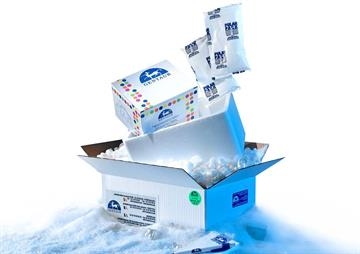Human iPSC-derived microglia

Human iPSC-derived microglia
0.01 €Ask for quotation
On request
quantity
product details
Catalog number: 566 - CSC-00835L
Product Category: Business & Industrial > Science & Laboratory
Creative BioarrayGentaur
Size: One Frozen vial
Parameters
| Storage and shipping | With |
|---|
Related Products
ABC-SC2110
HighQC™ Human IPSC-Derived Microglia
Human iPSC-derived Microglia are generated using a fully defined medium from a factory of human iPSC-derived monocytes. These highly validated Human iPSC-derived Microglia have been successfully used in multiple applications to evaluate functionality such as assessment for cytokine secretion by ELISA, phagocytosis capability by phagocytosis and efferocytosis assays, and changes in the production of reactive oxygen species (ROS) by ROS assays. Human iPSC-derived Microglia reveals the expression of key microglia-specific markers, such as transmembrane protein 119 (TMEM119) and Purinergic Receptor P2Y12 (P2RY12), and the myeloid markers TREM2 and IBA-1.
Ask for quotation
ABC-SC0066T
HighQC™ Human IPSC-Derived Neural Stem Cell-Trisomy X Patient
Trisomy X (Triple X) syndrome occurs at a frequency of approximately 1 in 1000 newborn females. The syndrome is associated with an increased risk of seizures and may affect short-term memory and learning although the majority of women affected show few clinical symptoms. Gentaur has developed iPSC-derived neural stem cells from a patient with the triple X chromosomal abnormality. All of the iPS cells examined (20 individual cells karyotyped), had trisomy X.Gentaur Human iPSC-Derived Neural Stem Cells (NSCs) are derived from integration-free, induced pluripotent stem cells (iPSCs) under fully defined neural induction conditions. The NSCs express typical markers of cerebral cortical neural stem and progenitor cells such as PAX6, FOXG1 and nestin, and spontaneously form polarized neural tube-like rosette structures when plated as a monolayer in culture (see below). Additionally, Gentaur NSCs are capable of generating a spectrum of cerebral cortical excitatory and inhibitory neurons that are electrically active and have the ability to form functional synapses and circuits in vitro. After thawing and plating, the neural stem cells terminally differentiate to acquire mature electrophysiological properties, and form functional synaptic networks over a period of 40 ~ 50 days.Gentaur NSCs are easy to differentiate to neurons or mixed neural cell types, following our protocols and using our tailored media and reagent bundles. A highly pure population of neurons can be generated from Gentaur NSCs following the synchronous differentiation protocol. Using our specialized coating reagents, neurons derived from Gentaur NSCs can be maintained in culture long-term (andgt;1 year). NSCs are available from multiple donors to suit your research needs and have been characterized extensively.
Ask for quotation
ABC-SC0067T
HighQC™ Human IPSC-Derived Neural Stem Cell LRRK2 G2019S HOM
Human Human IPSC-Derived Neural Stem Cells that have been genetically edited using CRISPR-Cas9 technology to introduce the G2019S mutation (GGCandgt;AGC) in the LRRK2 gene. This line is homozygous for the G2019S mutation so both alleles contain the mutation.The G2019S mutation in LRRK2 has been implicated in autosomal-dominant familial Parkinson's disease with late onset (Fonzo et al., 2006, Thaler et al., 2009). The G2019S mutation increases the kinase activity of LRRK2 causing increased autophosphorylation and substrate phosphorylation that may affect neuronal cell health in Parkinson's disease patients (West et al., 2005).
Ask for quotation
ABC-SC0068T
HighQC™ Human IPSC-Derived Neural Stem Cell LRRK2 G2019S HET
Human Human IPSC-Derived Neural Stem Cells that have been genetically edited using CRISPR-Cas9 technology to introduce the G2019S mutation (GGCandgt;AGC) in the LRRK2 gene. This line is heterozygous for the G2019S mutation where one allele contains the mutation and the other allele is wild type at the locus.The G2019S mutation in LRRK2 has been implicated in autosomal-dominant familial Parkinson's disease with late onset (Fonzo et al., 2006, Thaler et al., 2009). The G2019S mutation increases the kinase activity of LRRK2 causing increased autophosphorylation and substrate phosphorylation that may affect neuronal cell health in Parkinson's disease patients (West et al., 2005).









